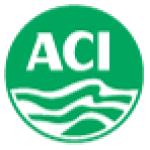Opsonil 50mg tablet 10's strip

Opsonil 50mg tablet 10's strip
৳ 6.00/=
Ex Tax: ৳ 6.00/=
- Stock: In Stock
- Model: MEDI-00169
- Generic: Chlorpromazine Hydrochloride
- Pack Size: Each Strip contains Opsonil 50mg tablet x 10's
0 items sold
2501 views
Available Options
Indications
Chlorpromazine is indicated in Psychoses, Nausea and vomiting, Psychoses, Intractable hiccup, Psychoses.
Therapeutic Class
Anti-emetic drugs,
Phenothiazine drugs,
Phenothiazine related drugs
Pharmacology
Chlorpromazine is a neuroleptic that acts by blocking the postsynaptic dopamine receptor in the mesolimbic dopaminergic system and inhibits the release of hypothalamic and hypophyseal hormones. It has antiemetic, serotonin-blocking, and weak antihistaminic properties and slight ganglion-blocking activity.
Dosage
Oral: Psychoses:
- Adult: 25 mg tid; may be given as a single 75 mg dose at night. Maintenance: 25-100 mg tid increased to ≥1 g daily as required in psychotic patients.
- Child: 1-12 yr: 500 mcg/kg every 4-6 hr. Max: >5 yr: 75 mg daily; 1-5 yr: 40 mg daily.
- Elderly: Initially, ⅓-½ the normal adult dose.
- Adult: Initially, 25-50 mg 3-4 times daily for 2-3 days; if unresponsive, may admin 25-50 mg via IM inj. If still necessary, 25-50 mg in 500-1000 ml of normal saline may be given via slow IV infusion.
- Child: 1-12 yr: 500 mcg/kg every 4-6 hr. Max: >5 yr: 75 mg daily; 1-5 yr: 40 mg daily.
- Elderly: Initially, ⅓-½ the normal adult dose.
- Adult: 25-50 mg repeated every 6-8 hr. Substitute with oral therapy as soon as possible.
- Child: 1-12 yr: 500 mcg/kg every 4-6 hr. Max: >5 yr: 75 mg daily; 1-5 yr: 40 mg daily.
- Elderly: Initially, ⅓-½ the normal adult dose.
- Adult: Initially, 25 mg via IM inj, followed by 25-50 mg every 3-4 hr until vomiting stops.
- Child: 1-12 yr: 500 mcg/kg every 4-6 hr. Max: >5 yr: 75 mg daily; 1-5 yr: 40 mg daily.
- Elderly: Initially, ⅓-½ the normal adult dose.
Administration
May be taken with or without food. May be taken with meals to reduce GI discomfort.
Interaction
Potentiation of anticholinergic effects of antiparkinson agents and TCAs may lead to an anticholinergic crisis. Additive orthostatic hypotensive effect in combination with MAOIs. Reverses antihypertensive effect of guanethidine, methyldopa and clonidine.
Contraindications
Hypersensitivity; preexisting CNS depression, coma, bone-marrow supression; phaeochromocytoma; lactation
Side Effects
Tardive dyskinesia (on long-term therapy). Involuntary movements of extremities may also occur. Dry mouth, constipation, urinary retention, mydriasis, agitation, insomnia, depression and convulsions; postural hypotension, ECG changes. Allergic skin reaction, amenorrhoea, gynaecomastia, weight gain. Hyperglycaemia and raised serum cholesterol.
Pregnancy & Lactation
Category C: Either studies in animals have revealed adverse effects on the foetus (teratogenic or embryocidal or other) and there are no controlled studies in women or studies in women and animals are not available. Drugs should be given only if the potential benefit justifies the potential risk to the foetus.
Precautions
Parkinson's disease; CV disease; renal or hepatic impairment; cerebrovascular and respiratoty disease; jaundice; DM; hypothyroidism; paralytic ileus; prostatic hyperplasia or urinary retention; epilepsy or history of seizures; myasthenia gravis; pregnancy; elderly (especially with dementia), and debilitated patients. Avoid direct sunlight.
Overdose Effects
Symptoms include somnolence, coma, hypotension and extrapyramidal symptoms. Other possible manifestations include agitation and restlessness, convulsions, fever, autonomic reactions such as dry mouth and ileus, EKG changes and cardiac arrhythmias.
Treatment is symptomatic and supportive. Early gastric lavage may be helpful. Observe patient and maintain an open airway.
Treatment is symptomatic and supportive. Early gastric lavage may be helpful. Observe patient and maintain an open airway.
Storage Conditions
Store at 15-30°C.
Source: medex.com.bd












